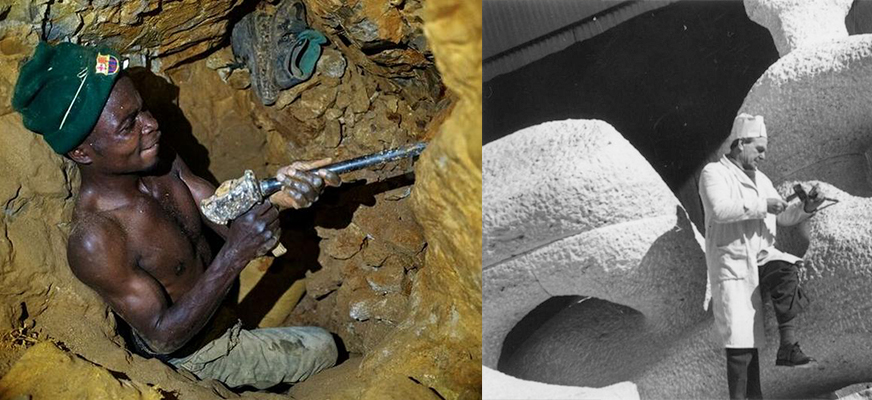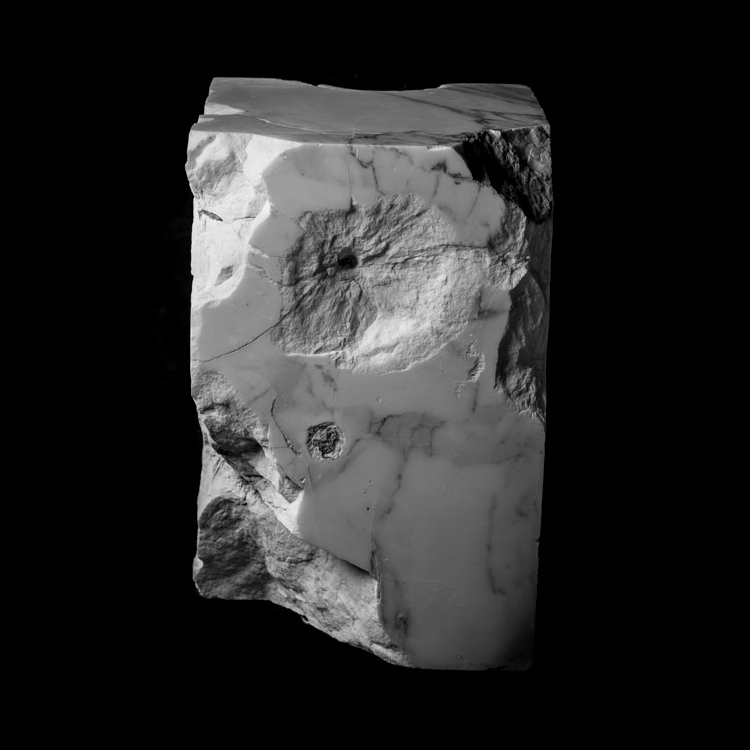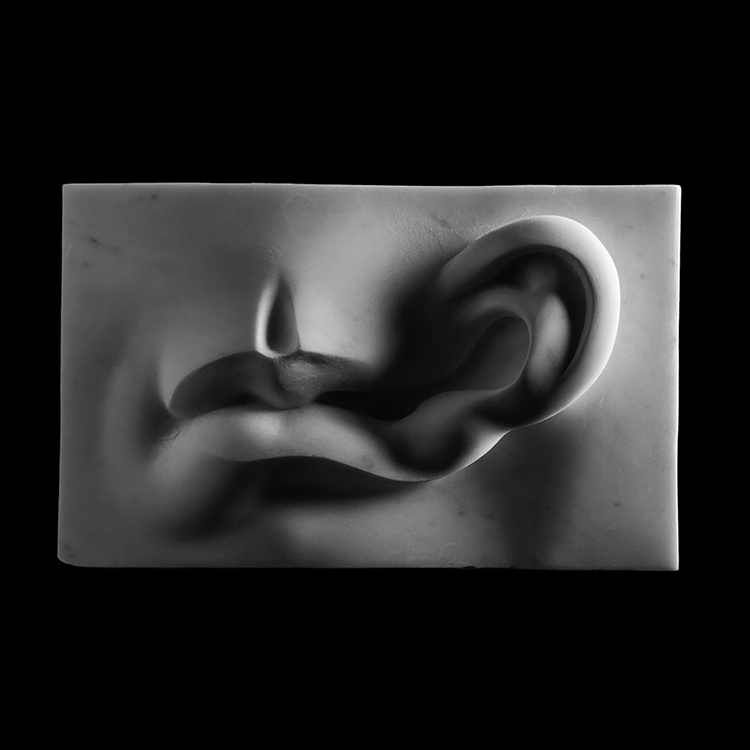On Sculpture and Mining
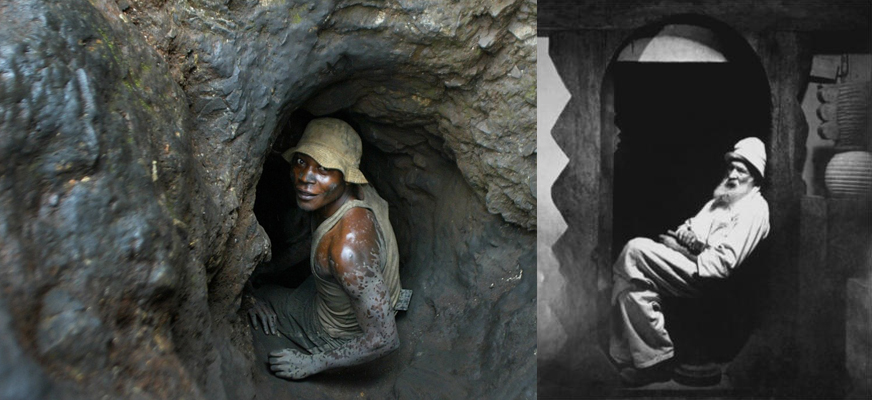
One of the supporting concepts of the 6th Lubumbashi Biennale is taking the Equator’s imaginary line as a pivotal point from which standard norms move to their opposite. An axis where the poles’ magnetic attractions balance each other, where compasses recognize new centres of gravity and where de-polarized stories can unfold. Gravity shifts from north to south, the positive becomes negative, seasons shift to their opposites, white becomes black and everything is turned upside down.
This new insight is relevant for revisiting the standard perception of sculpture. The idea is not new: Henry Moore already explored the relationship between masses and void, declaring the empty space, shaped by its surrounding matter, as a valid sculptural element. The holes in his early sculptures were features in themselves. His experiments can be interpreted as attempts to turn sculpture inside out. The figure creates space for the void.
Relative to the Biennale’s thesis, it is below the equatorial line that this theory finds its true expression. If the equator is a pivotal line from which things become their opposite, sculpture above the equator is characterized by a positive shape that emerges from the stone. It occupies a defined volume in space. Meanwhile, sculpture below the equator is its exact opposite – it is the negative space, or the void, that is formed by the removal of material from an undefined mass.
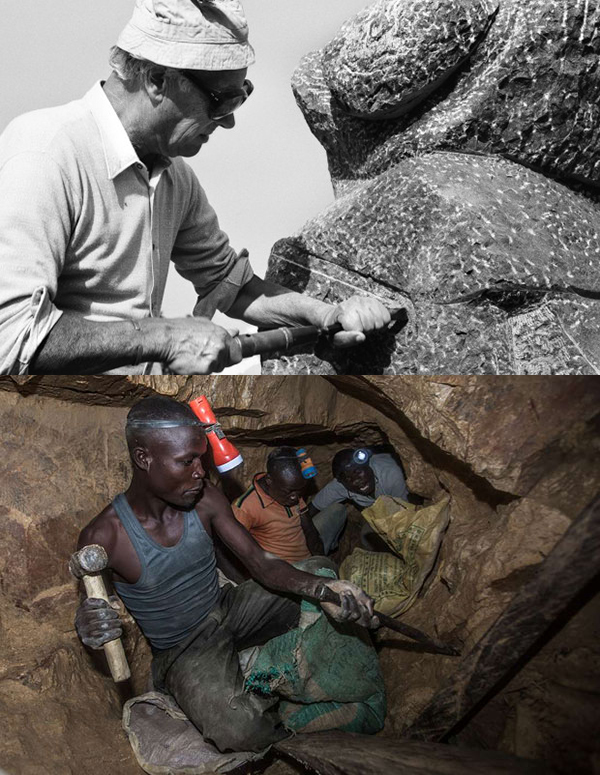
This theory is not supported by facts and gets refuted by the presence of “standard” sculptures – in the positive – on both hemispheres.
But it is worth indulging in the proposition as an intellectual exercise.
The question now is if one can consider as sculpture objects that have not been conceived with that particular goal in mind. We often attribute anthropomorphic features to abstract natural shapes – an isolated rock or a mountain edge reminds us of a human’s face in profile, for example.
If we decide to accept these positive spatial forms as sculptures according to the understanding of the discipline in pre-Moorian terms, then we must also recognize the negative spaces as sculptural elements that relate to the concept of sculpture. Thus canyons, or caves, could also be regarded as “sculpted” by nature over the course of time.
What about artificial, man-made shapes in the negative such as caves, canals and canyons that were created for utilitarian purposes. Could we interpret them as sculptural efforts as well?

A literal reading of Michelangelo’s definition of sculpture, namely that sculpture is that which is done by means of removal, combined with Henry Moore’s conception of the void as a sculptural element, would make a case for such an argument.
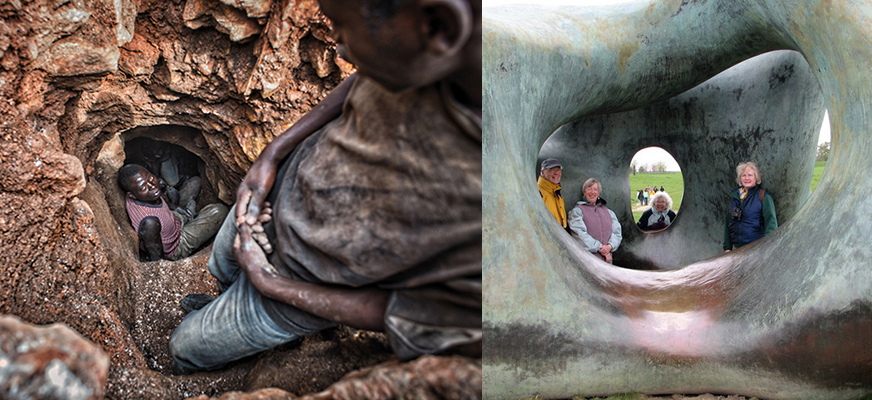
Caves, canals, and canyons resulting from mining activities can be interpreted as sculptures, therefore mining as a sculptural activity, and miners as sculptors. The intricate pathways carved into, and under, the ground are not much different from the ones carved by Constantin Brancusi, Henry Moore and Anish Kapoor. They are also not much different from those carved by insects. “The ant-men, termite-men … attack the edge of the slope with pickaxes … They come and go like ants and termites”, is how philosopher Achilles Mbembe describes the activity of Congolese miners. Not surprisingly, there is a technique where sculptures are made by pouring liquid metal into ant nests as if they were moulds, making the invisible visible, and the negative – positive.
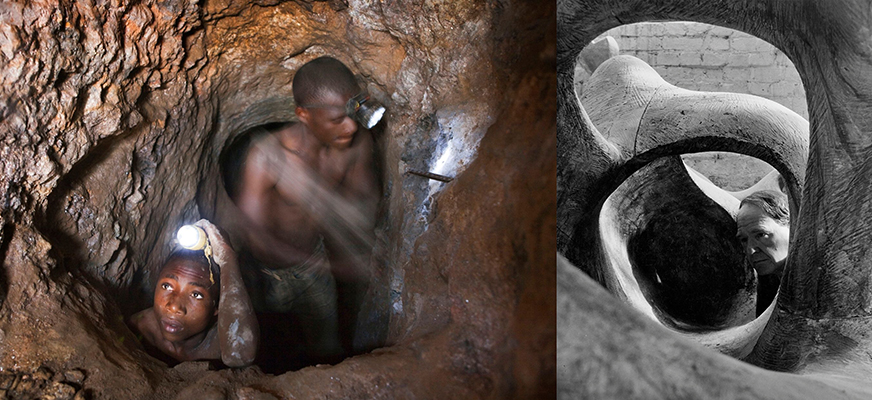
But if miners and their activity can be associated to sculpture, reciprocally, stone carving and sculptors can be respectively compared to mining and miners.
The types of sculpting and mining referred to here are those called “artistic”, where both sculptors and miners extract their respective value goods in the same way: through hard physical labour, and with the help of basic tools such as hammers and chisels.
Both practices are essentially concerned with the process of extraction. In the case of mining, the extraction concerns specific minerals and metals that have a set value in the financial world. In the case of sculpting, a sculpture is extracted which later attains an artistic and financial value. These do not necessarily go hand in hand, although they often do. And the values of both, although different in nature, are governed by specific market dynamics. Economics apart, we can ascertain that the two practices are comparable given that they share a process of extraction that is the exact same – the removal of excess matter in search of an object that is then valued by its respectable market.
Sculpting and mining essentially share one activity – extracting. They have never moved beyond that.
